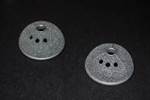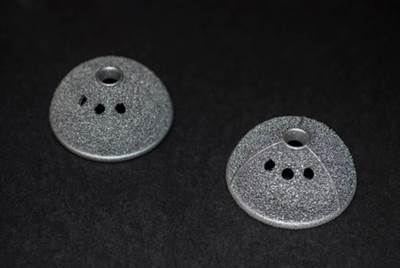Something More
The integration of manufacturing with product development creates a context that will help additive manufacturing advance.
In the medical device industry, the potential benefits of additive manufacturing are almost outrageously numerous. Creating precise and intricate components through an additive process instead of machining or molding can reduce expense, speed development, allow for cost-effective small batches and even allow for patient customization. Plus, this method of manufacturing provides the designer with geometric freedom—not just the freedom to refine the form to improve functionality, but also the freedom to innovate into areas not currently covered by intellectual property claims.
However, practically no medical inventor knows how to access these benefits. A surgeon devising a new implant or instrument knows surgery, not whether additive production is appropriate or how to design for this choice. Meanwhile, the additive equipment suppliers don’t know how to reach the inventors who are imagining products that could benefit from an additive process.
That is where Innovative Medical Device Solutions (IMDS) enters in. The company aims to help navigate this distance.
Headquartered in Fort Worth, Texas, this contract manufacturer of medical products agreed last year to become a “lighthouse partner” for additive manufacturing machine maker EOS. That is, IMDS will be a beacon for designers who do not yet know that additive manufacturing is what they need.
The established company has plants in three states. What makes IMDS distinctive is the way it couples this production capacity with in-house expertise related to medical products. The result is “Co-Innovation,” the company’s term for a range of services that includes testing, IP assessment, feasibility studies and regulatory evaluation before a proposed medical device is even considered for production. According to IMDS’s Michael Siemer, additive manufacturing fits right into this model.
Siemer, the company’s additive manufacturing engineering manager, is based at a Co-Innovation office in Orlando, Florida. Here, IMDS has begun to apply EOS’s direct metal laser sintering to help customers engineer new product designs. Among the part designs that are successfully prototyped, refined and proven out through this process are many that will proceed into full production using this same technology. For examples of ways the company is using additive manufacturing, see these images.
Labeling IMDS is difficult. The company engages customers earlier than manufacturers usually do, helping them develop and validate ideas prior to production. Thus, while the company is a manufacturer, it is also something more. And additive manufacturing makes this “something more” increasingly important.
That’s because additive manufacturing expands production options. It also pushes forward the choice of what option to use, because accepting or rejecting additive has dramatic implications for design. As a result, additive manufacturing increases the value of bringing innovation and manufacturing together—as IMDS has done.
In fact, this role of engaging product designers early, so as to guide their work into the appropriate production choice, is so valuable that it seems likely that other manufacturers will move to fill it—not just in medical but in other industries, too. That is, other lighthouses will be raised. Whatever else IMDS might be, it is a model for how additive manufacturing will find its applications.
Related Content
Titanium Golf Club Line Leverages AM to Boost Clubhead Performance
Japanese lifestyle golf brand Designer utilizes Farsoon 3D printing to optimize the design and production of its latest titanium golf club line.
Read MoreFaster Iteration, Flexible Production: How This Inflation System OEM Wins With 3D Printing
Haltec Corp., a manufacturer of tire valves and inflation systems, finds utility in 3D printing for rapid prototyping and production of components for its modular and customizable products.
Read MoreIndyCar's 3D Printed Top Frame Increases Driver Safety
The IndyCar titanium top frame is a safety device standard to all the series' cars. The 3D printed titanium component holds the aeroscreen and protects drivers on the track.
Read MoreHow to Build 10,000+ Shot Molds in Hours
Rapid tooling isn’t so rapid when it takes days to 3D print a metal mold, and then you still must machine it to reach the necessary tolerances. With Nexa3D’s polymer process you can print a mold in hours that is prototype or production ready and can last for more than 10,000 shots.
Read MoreRead Next
Medical Benefits
Part examples from an established manufacturer of medical implants and instruments illustrate the expanded engineering possibilities that additive manufacturing is making possible.
Read MoreAt General Atomics, Do Unmanned Aerial Systems Reveal the Future of Aircraft Manufacturing?
The maker of the Predator and SkyGuardian remote aircraft can implement additive manufacturing more rapidly and widely than the makers of other types of planes. The role of 3D printing in current and future UAS components hints at how far AM can go to save cost and time in aircraft production and design.
Read More3D Printing Brings Sustainability, Accessibility to Glass Manufacturing
Australian startup Maple Glass Printing has developed a process for extruding glass into artwork, lab implements and architectural elements. Along the way, the company has also found more efficient ways of recycling this material.
Read More
.jpg;width=70;height=70;mode=crop)

















